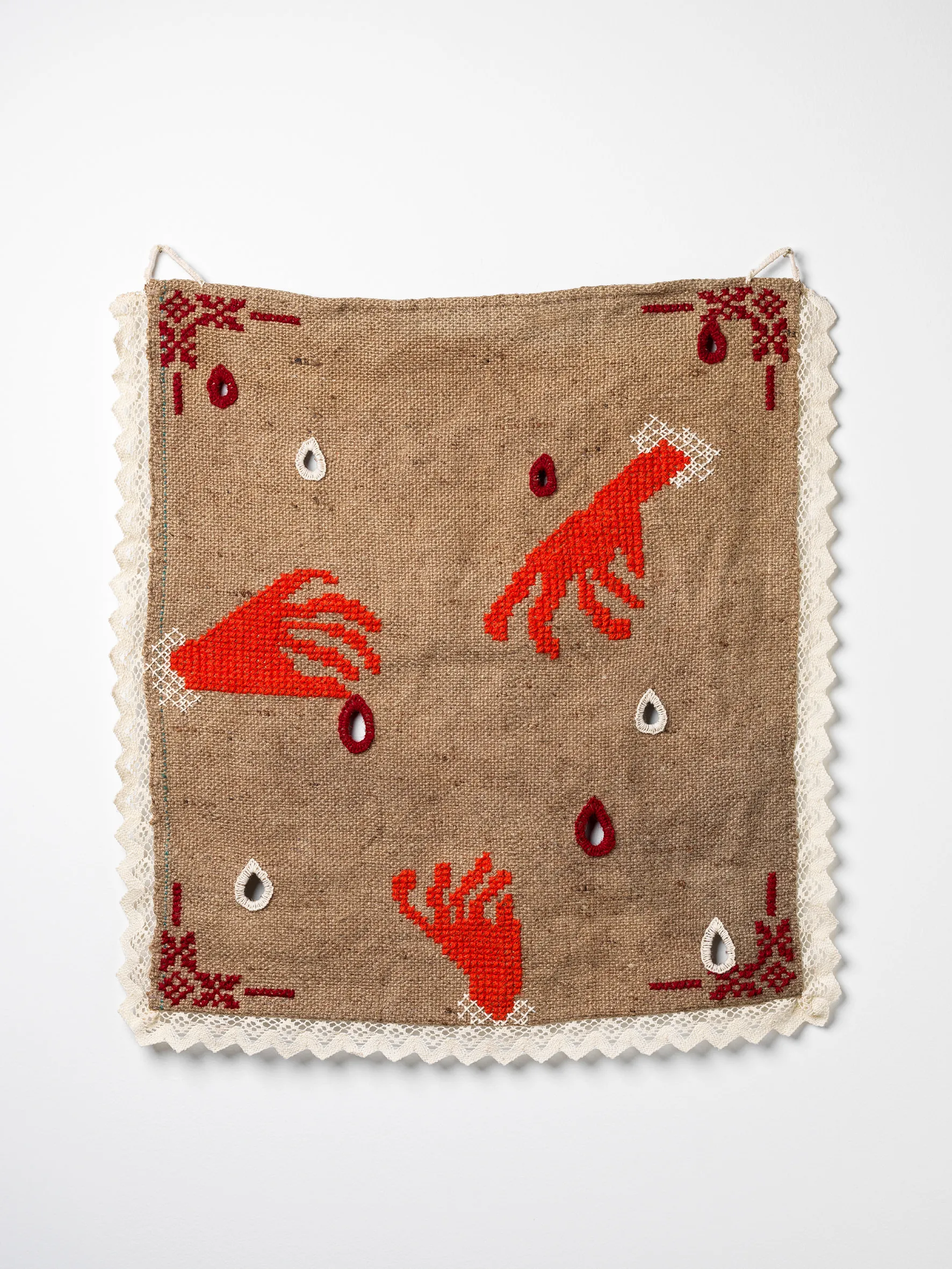The Unwritten Between: Tears Blood Toil Sweat Milk
This embroidery responds to the tradition of redwork (and whitework) upon hessian of which there are numerous examples from early domestic makings in the Barossa. These examples are often utilitarian and sparse, presumably use hessian for its availability and hardiness, and often feature German cross-stitched text and patterns. As a response I have repurposed one of Laucke Mill’s hessian sacks, washed, but with traces of its life and grime present and attempted to represent the women’s bodies behind these traditions. When thinking about the women who stitched the original artefacts I reflected that between their birth and death records were traditions of being neat, of cleaning up, tidying, and in many ways negating one’s own bodily self and labours. So instead this artwork recreates the hands that toiled, as well as droplets alluding to the fluids that make up labours of life; tears, sweat, mother’s milk and blood (as holes for these are rarely acknowledged). The strange hands are drawn from a German 16th century sampler (in the V&A collection), and border motifs are adapted from local Barossa examples. Together they make a contemporary response to age-old traditions.
